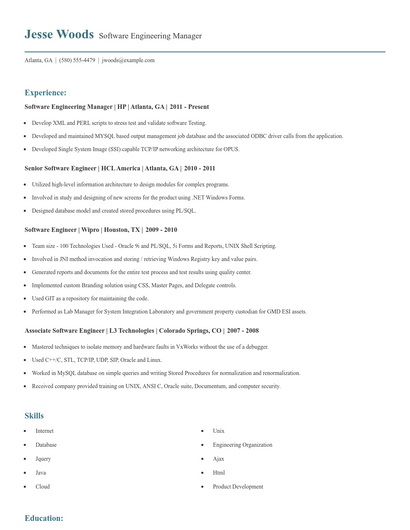
Are you interested in a career in renewable energy engineering mechanical engineering? This article will inform you about the requirements for this career and the outlook for employment in this area. Continue reading for more information! All the details will be covered! First, let's look at what a job in renewable energy mechanical engineering is. This career field combines many disciplines and offers a variety of opportunities. Here's a quick overview.
Careers in renewable energy
A career in renewable energy mechanical engineering will allow you to work in a rapidly growing industry. Renewable energy engineers work with teams to design renewable energy infrastructure and systems, as well as educate non-technical stakeholders on the viability of such technologies. Mechanical engineers are also vital in the daily operations of renewable energy projects. Additionally, they often participate in research and development for renewable energy technologies. They address issues related energy storage and equipment design.

The career path of a renewable energy mechanic engineer depends on what field they are in. A Bachelor's degree is required to pursue a career in mechanical engineering. In an office environment, students can also pursue careers related to renewable energy. Although some jobs require a Master’s degree, it is not necessary to be a professional in this field. Aside from studying renewable energy engineering, industrial engineers can also be employed in this field.
Education requirements
There are many career options for graduates in renewable energy mechanic engineering. The field is expanding rapidly and there is an increased demand for qualified individuals. The salaries of renewable energy engineers can reach six figures. If you are passionate about solving problems and love the environment, this career path can be very rewarding. This rewarding career is possible in several ways. You can start by getting your bachelor's level in mechanical engineering. Then, you can go on to complete your graduate education and become licensed by your state licensing body.
Although the requirements for renewable energy mechanical engineers vary, the University of Florida offers an undergraduate degree. In addition to that, Oregon Institute of Technology has lower requirements for admission than the University of Florida. However, Carnegie Mellon University is more expensive than Duke University. Before you decide on a school, ensure that you check the admission requirements. Take the right classes to start your career as an engineer in renewable energy.
Future employment outlook
Renewable energy mechanical engineers may find a plethora of opportunities in the growing energy sector. Engineers could design solar panels or turbines. Or they might develop transmission systems to power plants. Engineers in this field are also able to develop innovative methods to convert crops into ethanol, green fuel from landfill gas, or even heat water from the sun to fuel. This field has many opportunities for engineers, and they are very adaptable.

The American Society of Mechanical Engineers estimates that 20 percent of the world's electricity comes from renewable energy sources. Although hydropower is the main source of renewable energy, wind and sun energy are increasingly popular. There are many opportunities for renewable energy jobs in all engineering fields. The outlook for employment is good. A career as a renewable energy engineer can offer many benefits, such as a steady and lucrative job and higher salary potential. This industry is a good fit for people who have a passion for environmental conservation.
FAQ
What does it mean to be a mechanical engineer?
A mechanical engineer is responsible for designing machines, tools, products, processes, and vehicles that are used by people.
The engineering principles of mathematics, physics, as well as engineering principles, are used by mechanical engineers to solve real-world problems.
A mechanical engineer can be involved in product design, production, maintenance quality control, research, testing or sales.
Which engineering task is the most difficult?
The greatest engineering challenge is designing a system that is strong enough to withstand all types of failure, yet flexible enough for future changes.
This involves a lot testing and iteration. You must also understand how the system should react when everything goes wrong. You need to ensure that you don't just solve one problem, but that you design a solution that addresses multiple problems simultaneously.
What is the Hardest Engineering Major
Computer science is the hardest engineering major because you need to learn everything completely from scratch. You must also know how to think creatively.
You will need to be able to understand programming languages such as C++ Java, Python JavaScript PHP HTML CSS SQL SQL XML and many other.
It is also important to understand how computers work. You will need to know about hardware, software architectures and operating systems.
Computer Science is the best option to train as an engineer.
Which engineer makes the highest salary?
Software engineers, who are responsible for writing code for computers, would be the right answer. They are also able to choose the kind of project they want. Software engineers can work anywhere, but most prefer to work at technology companies like Google or Microsoft.
Statistics
- 8% Civil engineers solve infrastructure problems. (snhu.edu)
- Typically required education: Bachelor's degree in aeronautical engineering Job growth outlook through 2030: 8% Aerospace engineers specialize in designing spacecraft, aircraft, satellites, and missiles. (snhu.edu)
External Links
How To
How to create letters for engineering drawings
Two types of engineering drawings are available: technical drawings (also known as engineering sketches) and architectural drawings. The first shows the product’s physical features. While the second shows how the product should appear. Each type includes detailed specifications, dimensions and symbols as well as text and arrows. Engineers use their own language when writing these documents. They can refer to specific units or abbreviations as well as acronyms. These terms are known engineering lingo. This article explains exactly what they mean.
A letter is a formal written document that an individual or organization sends to another person or organisation. It usually contains a greeting, salutation, signature, date, and closing remarks. Most people also include a self-introduction at the beginning of the letter. Some letters might contain business details such as legal agreements. Some letters may contain only greetings or signatures.
An engineer uses professional experience to develop a plan, design a machine, build a bridge, or draw a diagram. Engineers must communicate clearly in order to convey their work. Technical terms describe the product, process, materials, and methods.
Engineers often use special terms to explain things. To talk about electric current, engineers use the term "ampere". For mass measurements, they may use the expression "kilogram per meter sq.d." These terms are called scientific numbers. They are called common names by other engineers, as they are widely used. Common names are easier than common names and easier to remember.
Technical terms are often abbreviated. A abbreviation is a shorter word. For example, "kW" stands for kilowatt. If you see "KW", you will know that it is kilowatt. It doesn't matter how long it takes to remember the name.
Engineers may also use many acronyms and abbreviations other than technical terms. These are similar abbreviations to acronyms but can also be composed of multiple words. Examples of these are "IEC", "DIN," or "ANSI." These are essential because they facilitate communication and make it easier.
When engineers use their jargon, they do not always follow standard spelling rules. They may spell out numbers using digits instead number. They may use different capitalizations from the norm. Capitalization refers both to whether a word starts in capital letters or lowercase. Words that begin with a vowel sound can be spelled differently to words that begin with consonants.